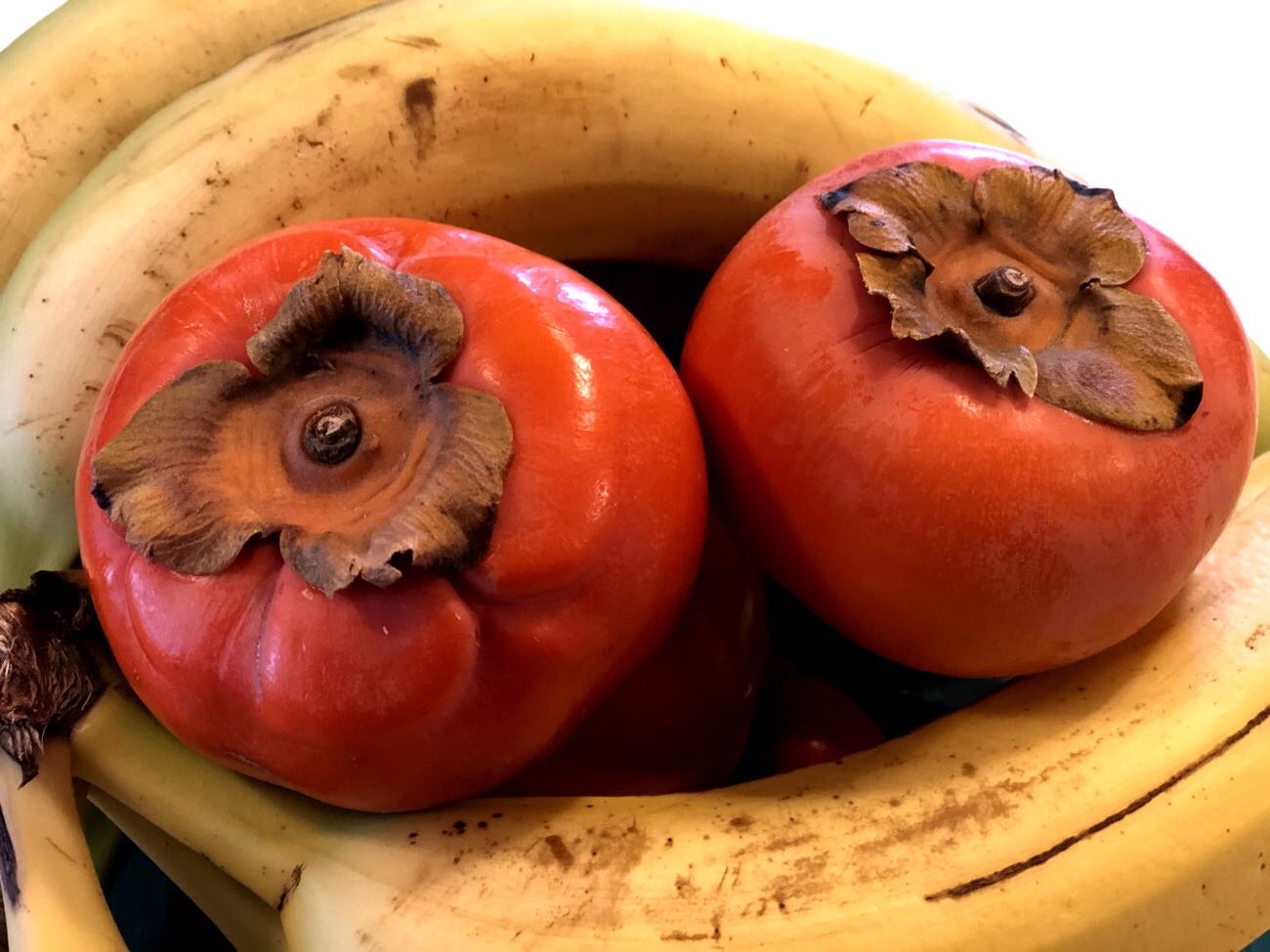
I’ve previously mentioned how fortunate we are to have an Asian (Korean) grocery not too far from where we live; without it, I would be craving kimchi, tteokguk, and kimbap…and I would be very sad, indeed. A special seasonal treat, persimmons also make their appearance at Asian groceries, emblematic of this chilly time of year.
For me, persimmons will always be inextricably linked to Autumn. I remember, as a kid, going to the Korean market and buying big, beautiful persimmons – not the tomato-shaped ones (Fuyu) you might typically think of, but the acorn-shaped ones called Hachiya. Hachiya are less forgiving than Fuyu: fail to wait for the fruit to properly ripen, and you’ll end up with a mouthful of astringent bite. On the other hand, if the fruit is soft and ripe, it’s the most delectable pudding imaginable. Patience!
Persimmons have a very unique flavor – very sweet, but also somehow bright and fresh at the same time. I remember waiting for the persimmons to ripen – sometimes taking days – and black marks developing on the skin. The spots didn’t indicate that the fruit had spoiled; rather, it seemed similar to what occurs with ripening bananas, where the spots indicate sugar development. A ripe Hachiya is very yielding to the touch, even squishy, and the flesh has a texture somewhat similar to a ripe apricot.
You can find fancy recipes for savoring persimmons, but I think that the best way to appreciate them is to simply eat them fresh. Aside from their taste appeal, persimmons are full of vitamins, minerals, antioxidants, and fiber, and offer a host of health benefits.
So, the next time you’re at an Asian market or grocery store and see the deep orange fruit beckoning to you, grab a few and either enjoy them right away (Fuyu) or wait until they reach peak ripeness (Hachiya), then enjoy a truly delightful gustatory experience!
